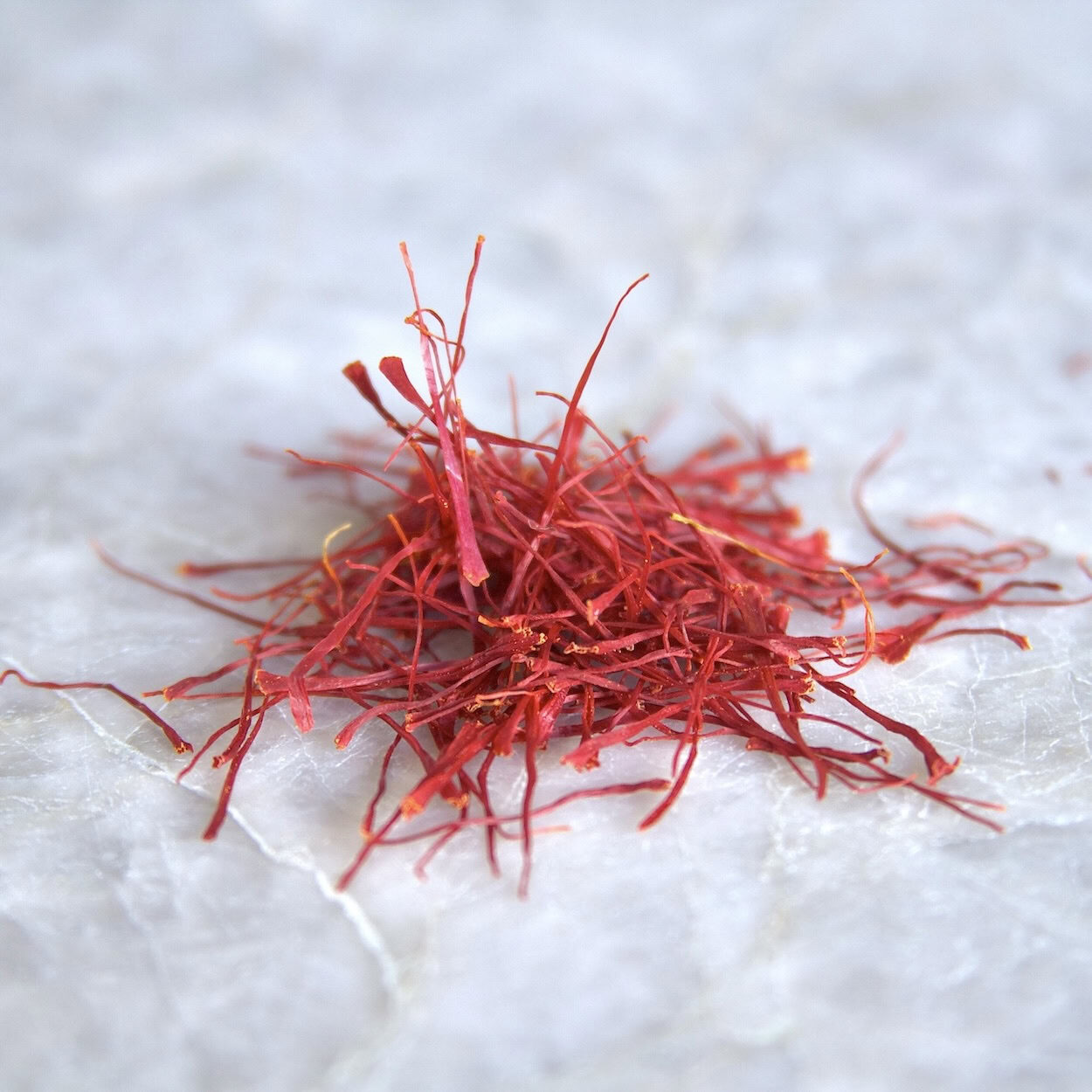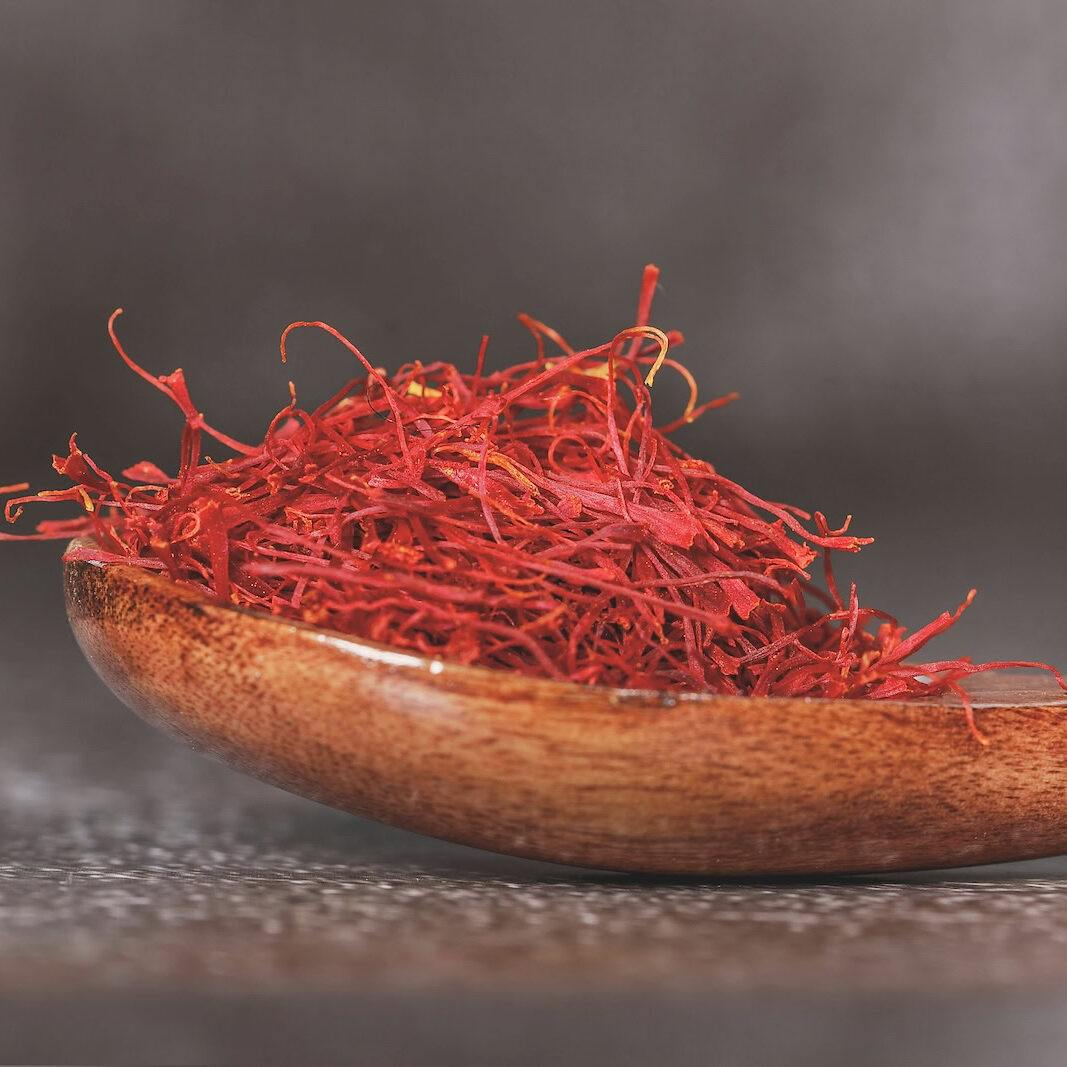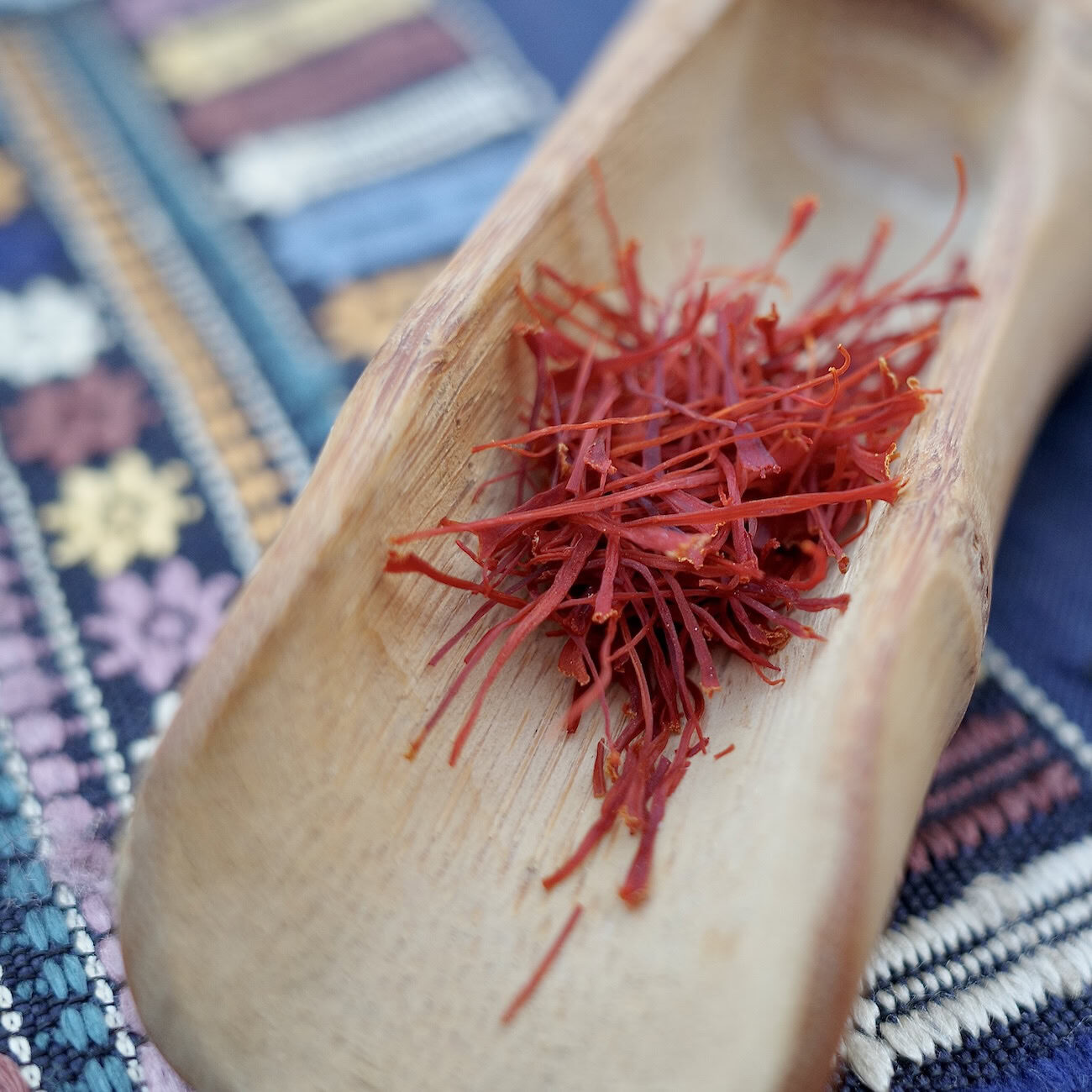Saffron
Saffron is the spice produced from the stigmas of the saffron crocus (Crocus sativus), a bulbous autumn-flowering perennial in the iris family.

REGION OF ORIGIN
Greece. For centuries, the question of saffron's origin went unanswered. Then in 2019, two independent research teams identified its ancestor. It is the wild Crocus cartwrightianus, which evolved in the Attica region of Greece, home to Athens. Coupled with some of saffron’s earliest historical appearances, like the ancient Minoan frescoes of Crete and Santorini (~1500-1600 BCE), it seems this age-old mystery is solved.
PART & COLOR
Saffron is the only spice derived from a flower's stigmas, also called strands or threads. They should be a vibrant, deep crimson with a tint of orange-gold at the tips. The deeper and more uniform the red, the better. Saffron is the most expensive spice in the world, which can lead to adulteration. Inferior threads are died or mixed in with parts of other plants like safflower, so only purchase from reputable sources.
HARVEST
The harvest period is very brief, typically only 1-3 weeks in October or November, depending on the year and region. Learn more about the production of saffron.

FLAVOR & AROMA PROFILE
Saffron has mysterious qualities that make it one of the world's most coveted spices. Its distinctive, lasting aroma is an odd mix of spicy, creamy, and leathery. It is reminiscent of honey, vanilla, and fine tobacco, undercut by hints of freshly cut hay. It is grassy, yet slightly metallic. This exquisitely unusual scent is joined by an elusive bittersweet flavor, subtly floral and curiously earthy.
Adding to saffron's tantalizing complexity, its aroma and flavor profile evolves as it infuses more deeply into a dish. The initial floral notes give way to a lingering warmth. This also happens on the palate, as the honeyed sweetness mellows into a delicate bitterness, creating balance. Saffron’s timeless allure is rooted in its sublimity. With such depth, words alone could never properly describe it. It is to be experienced, preferably with great company.
CULINARY USES
Highly versatile, saffron enhances the delicate flavors of fish, amplifies savory meats, and deepens spiciness. Just a touch adds a brilliant gold color, penetrating aroma, and nuanced taste. Saffron lends itself famously to rice dishes, from Spanish paellas to Italian risottos to South Asian biryanis and curries. Its exotic flavor is equally at home in Mediterranean and Middle Eastern cuisine.
Citrus, stone fruits, and earthy vegetables also benefit from a sprinkling, and it affects each one in unique ways. Saffron is commonly used in baked goods as well, flavoring breads and elevating the sweet notes of custards and cookies. To maximize flavor, gently crush a few strands and steep them in warm water, milk, or broth for about 20 minutes. The infused liquid, along with the steeped threads, can be incorporated into your dish.



